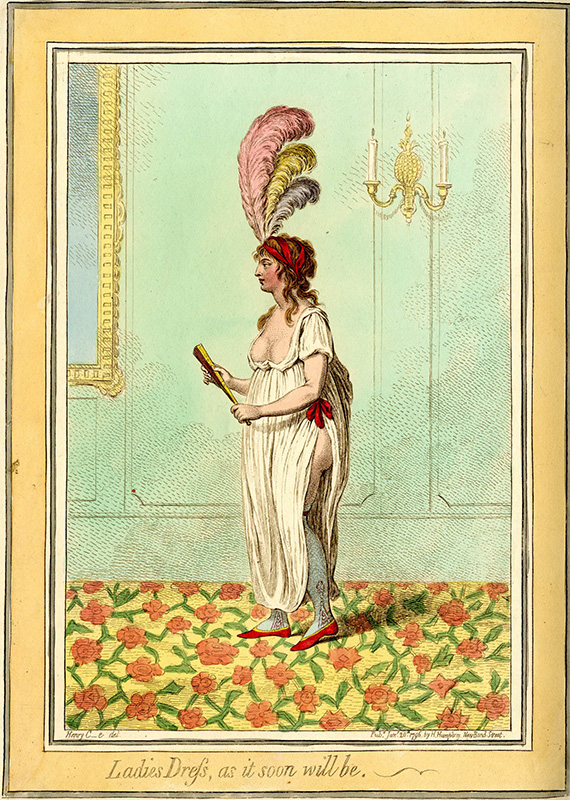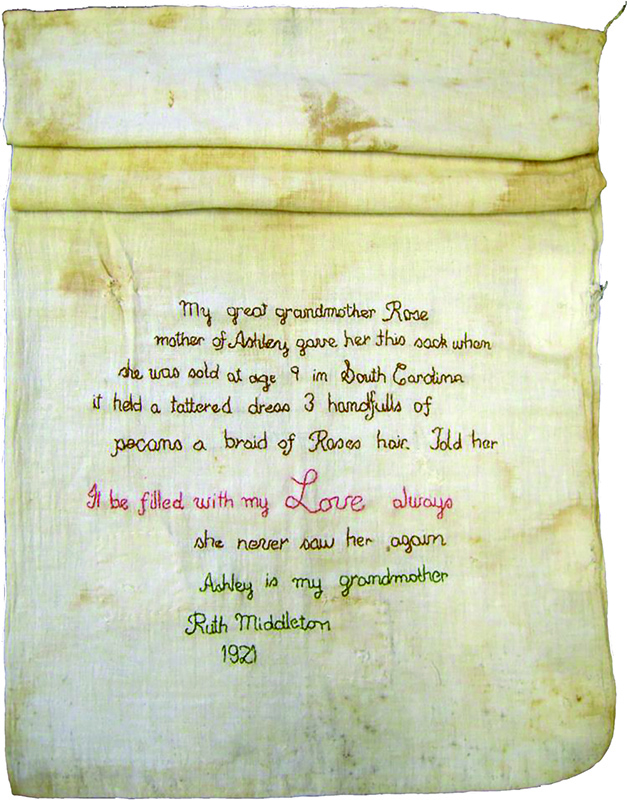Bodily Things: Three Recent Books Underscore the Centrality of Bodies in Material Studies
by Kate Burnett Budzyn
It is a fact “so obvious that some of us take it for granted,” writes the historian and anthropologist Michel-Rolph Trouillot: “History begins with bodies and artifacts.”1 All material culture enthusiasts know that objects are powerful bearers of history. Objects document the stories of people who have been failed by the written record, and they offer the possibility of experiential, first-person connection to the past. And yet, removed from their natural habitats and shown in museum galleries and on catalog pages, decorative objects like the Cadwalader easy chair or tankards made by Paul Revere are more typically recognized for their beautiful forms, remarkable provenance, and exceptional craftspersonship than for their most basic purpose of supporting bodily needs. Increasingly, though, material histories of the body—works that center physical experience, corporeal subjectivity, and the ways in which constructs of race and gender inform them—remind us that objects are the containers and purveyors of intimate experience, and that they carry crucial information about how the experience of the human body itself has changed over time.
Kristina Wilson’s Mid-Century Modernism and the American Body: Race, Gender, and the Politics of Power in Design (Princeton University Press, 2021) explores the ways in which whiteness and male hegemony informed the cool lines and targeted advertising campaigns of the major mid-century design firms. “Through forms that empower the bodies of some users while controlling others, through narratives of exclusion and discipline conjured in advertisements and popular images, and through strategic use of allegedly ‘exotic’ accessories in Modernist interiors,” Wilson writes, “Modernism was consistently deployed for White audiences in the 1950s as a tool that established and reinforced the distinctiveness of racialized Whiteness.”
The book examines advice manuals, popular magazines, manufacturing designs, and objects themselves to interrogate the ways in which the era’s “empathetic” designs not only anticipated users’ forms but also controlled gendered bodily experience, immersing consumers in a visual culture rife with images of white women’s bodies conforming to modernist objects and spaces. By contrast, Wilson argues, popular design sources made by and for Black Americans (as featured in Ebony magazine, for example) tended to employ modernist objects as tools of class status, sociability, and bodily comfort rather than of objectification and racial exclusion.
Mid-Century Modernism and the American Body thus reveals two distinct modernisms—one experienced by white consumers and another experienced by Black consumers. Especially haunting is Wilson’s epilogue, “The Ubiquity of Mid-century Modernism,” in which she refers to our 21st-century infatuation with modernist design of the 1940s, 1950s, and 1960s as today’s “Colonial Revival.” What does it mean when we look to a past movement marked by racially segregated suburbanism, arch gender normativity, and white male authority to inform the design decisions that shape our everyday bodily experiences? Tantalizingly illustrated with over 150 images taken from diverse design sources, Wilson’s book offers a beautiful and destabilizing “counter-history” of modernism that forces us to reconsider the sources and motivations behind the decorative revivalisms we hold dear.
Jumping back a century and a half, Amelia Rauser’s The Age of Undress: Art, Fashion, and the Classical Ideal in the 1790s (Yale University Press, 2020) similarly seeks to recover embodied experience from within another aesthetic movement known for its spare lines, masculinity, and rationalism: Neoclassicism. Focusing her study on the brief but revolutionary period during which American and European women embraced Neoclassical dress—a Grecian-inspired style of high-waisted, loose-fitting dress made of lightweight white cotton muslin—Rauser gives us an expansive piece of scholarship that refuses the silo of fashion history and compellingly addresses the absences in our broad understanding of this design period. “In this book,” she writes, “I wish to show that . . . the neoclassicism of the 1790s was often intensely embodied and deeply emotional, and that women were at its center: as ideals and allegories, as artistic agents—active aesthetic innovators and creators—and as important patrons.”
By donning this new, “startlingly naked” style of “natural” dress, elite women of the late 18th century turned themselves into living statues and brought Neoclassical aesthetic ideals into their everyday lives. They also experienced a form of clothing that both accommodated physical movement and celebrated pregnancy.
Ambitious and comprehensive, Rauser’s text covers broad geographic territory (London, Naples, and Paris each get their own chapter); underlying social and political forces (the French Revolution, slavery-based plantation culture, and the racialization of whiteness all influenced the style); and delightfully arcane sartorial histories (see the much-maligned case of the “belly pad,” p. 101). The five main chapters are paired with five “short formalist studies,” which are printed on pale pink pages and offer meditations on each of the distinguishing material elements of Neoclassical dress: drape, transparency, high-waistedness, whiteness, and lightness. The book’s structure thus reinforces the inseparability of clothing, sensory experience, and cultural history in a way that is thorough, revelatory, and utterly satisfying.
Tiya Miles’s All That She Carried (Random House, 2021) joins this trio of material histories of the body not as a design history but as a work that emphasizes the vital importance of craft, material assemblage, and the matrilineal bequeathal of things. The book tells the story of Ashley’s sack, an object so powerful that it documents its own history (see the image above to read what historian Stephen Berry has suggested is “the world’s shortest slave narrative”). As Miles writes, “the sack is more than an artifact. It is an archive of its own, a collection of disparate materials and messages. It is at once a container, a carrier, textile, art piece, and record of past events.”
Reading this object-as-archive closely, Miles recovers vibrant histories for Rose, Ashley, and Ruth, the three women named on the sack. Where the written record fails these individuals, as it so often does for women of color throughout history, Miles patches in broader histories of Black women’s experiences in the face of slavery. The book becomes a compendium of information about enslaved women’s clothing, hair, naturalist survival skills, and motherhood. Throughout, Miles carefully, lovingly, explores the intrinsic relationship between objects, bodies, and resilience within the history of slavery. “For unfree people, things could soften an unrelenting daily routine, as practical items like shoes, quilts, and drinking cups protected against the elements and diminished deprivation,” she writes. “Having things also undermined the logic of slavery in a society in which it was illegal for ‘property’ to own property. . . Having possessions was a salve that reinforced a sense of self-worth in a society that demeaned Black people by equating them with objects.”
Particularly poignant is Miles’s offering, in her prologue, that these three women’s legacies of survival and love provide guidance to us in our time of existential threat: “We think it a fantasy that we might rescue our children’s futures, or revive our democratic principles, or redeem our damaged earth. In our moment of bleak extremity, Black women of the past can be our teachers.” Miles’s book is the kind of history that you read feverishly from cover to cover and then hand off immediately to the next person you see. It is a brilliant, urgent, and accessible demonstration of “the immeasurable value of material culture to the histories of the marginalized.”
While Wilson, Rauser, and Miles cover vastly different topics, their studies are all built on the radical foundation that we cannot truly access material culture without admitting that bodies—our own as well as others’—are at the center of the process. As a result, these historians have given us three powerful books that conjure sensory experience, push us to conceive of the past in a way that is at once more inclusive and more intimate, and each almost certainly offer something for everyone.
Kate Burnett Budzyn is a contributing writer for The Decorative Arts Trust Bulletin. She researches historic clothing and textiles and is the book review editor at Winterthur Portfolio.
1 Michel-Rolph Trouillot, Silencing the Past: Power and the Production of History (1995; repr., Boston: Beacon Press, 2015), 29, quoted in Miles, All That She Carried (NY: Random House, 2021), 19.
About The Decorative Arts Trust Bulletin
Formerly known as the "blog,” the Bulletin features new research and scholarship, travelogues, book reviews, and museum and gallery exhibitions. The Bulletin complements The Magazine of the Decorative Arts Trust, our biannual members publication.













